Mechanical Engineer
900+ Mechanical Engineer Interview Questions and Answers

Asked in Adani Group

Q. can you explain material handling process using belt conveyor system? what is the width & type of your belt conveyor?
Material handling process using belt conveyor system involves transporting materials efficiently. The width and type of belt conveyor depend on the specific application.
Belt conveyor system is used to transport materials from one location to another in a production facility or warehouse.
The width of the belt conveyor depends on the size and weight of the materials being transported. It can range from a few inches to several feet.
The type of belt conveyor can vary based on the...read more
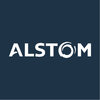
Asked in Alstom Transportation

Q. What metrics of success might you use to evaluate my performance?
Evaluating performance can involve metrics like project completion, innovation, teamwork, and adherence to safety standards.
Project Completion: Timely delivery of projects within budget, e.g., completing a design project ahead of schedule.
Innovation: Contribution of new ideas or improvements, such as developing a more efficient cooling system.
Teamwork: Collaboration with colleagues, demonstrated by successful cross-departmental projects.
Safety Standards: Adherence to safety p...read more

Asked in Apple

Q. What is the difference between actual stress and engineering stress?
Actual stress is the force applied to a material, while engineering stress is the force per unit area of the original cross-sectional area.
Actual stress is calculated using the actual area of the material that is being stressed, while engineering stress is calculated using the original cross-sectional area of the material.
Engineering stress is commonly used in engineering design and analysis, while actual stress is used in material testing and failure analysis.
For example, if...read more

Asked in Maruti Suzuki

Q. What is the engine oil pressure?
Engine oil pressure is the pressure at which the oil is pumped through the engine to lubricate its moving parts.
Engine oil pressure is measured in pounds per square inch (PSI).
Low oil pressure can cause engine damage and should be addressed immediately.
Oil pressure can vary depending on engine speed and temperature.
Oil pressure gauges are typically located on the dashboard of a vehicle.
Normal oil pressure for most engines is between 20 and 60 PSI.
Asked in Seplat Petroleum

Q. How are NNPC/SEPLAT improving oil and gas safety to avert danger?
NNPC/SEPLAT is improving oil and gas safety through various initiatives and collaborations.
Implementing strict safety protocols and guidelines
Regular safety training for employees
Investing in advanced safety technology and equipment
Collaborating with regulatory bodies and industry experts
Conducting regular safety audits and inspections
Asked in Seplat Petroleum

Q. How can human capacity management be improved within HR for oil and gas companies like NNPC/SEPLAT?
Improving human capacity management in HR for oil and gas companies like NNPC/SEPLAT
Implementing regular training programs to enhance skills and knowledge
Utilizing technology for efficient recruitment and performance evaluation
Creating a conducive work environment to boost employee morale
Offering competitive compensation and benefits to attract and retain top talent
Establishing clear career development paths for employees
Mechanical Engineer Jobs


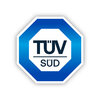

Asked in Iol Chemicals & Pharmaceuticals

Q. What checkpoints are checked during the installation of a reactor mechanical seal?
Checkpoints during installation of reactor mechanical seal
Alignment of seal faces
Proper installation of seal support system
Correct torque applied to bolts
Verification of seal flush system
Inspection of seal faces for damage or defects
Testing of seal for leakage
Documentation of installation process
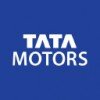
Asked in Tata Motors

Q. What is the absolute exit angle of an impulse turbine?
The obsolete angle of impulse turbine is the angle at which the blades are set in relation to the direction of the water flow.
Obsolete angle is typically around 20-22 degrees for impulse turbines.
It determines the efficiency and performance of the turbine.
Incorrect angle can lead to reduced power output and efficiency.
Examples: Pelton wheel, Turgo turbine.
Share interview questions and help millions of jobseekers 🌟

Asked in Seplat Petroleum

Q. What update for oil and gas is opec in concept of science, engineering and technology
OPEC plays a crucial role in the oil and gas industry by regulating production levels to stabilize prices and ensure market balance.
OPEC uses scientific data and analysis to determine production quotas for member countries.
Engineering plays a role in developing technologies for oil extraction, refining, and transportation.
Technology advancements in drilling techniques and equipment have increased oil and gas production efficiency.
OPEC meetings often involve discussions on the...read more

Asked in Euphotic Labs

Q. What are the different types of manufacturing processes?
Manufacturing processes include casting, forging, machining, welding, and more.
Casting: pouring molten metal into a mold to create a solid object
Forging: shaping metal by heating and hammering
Machining: using tools to remove material from a workpiece
Welding: joining two pieces of metal by melting them together
Additive manufacturing: building up layers of material to create a 3D object
Forming: shaping metal without removing material, such as bending or stamping
Extrusion: forci...read more
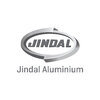
Asked in Jindal Aluminium

Q. What is hydraulics?
Hydraulics is a branch of engineering that deals with the mechanical properties of liquids, especially water or oil, and their applications.
Hydraulics involves the study of fluid mechanics and the behavior of liquids under pressure.
It is used in various applications such as hydraulic machinery, hydraulic systems, and hydraulic power transmission.
Hydraulic systems use fluid pressure to generate, control, and transmit power.
Examples of hydraulic systems include hydraulic lifts,...read more

Asked in Larsen & Toubro Limited

Q. What is Thermodynamics?
Thermodynamics is the study of energy and its transformations in relation to heat and work.
It deals with the behavior of energy and its conversion from one form to another.
It involves the study of heat transfer, work, and the properties of substances.
Thermodynamics is essential in designing and analyzing various mechanical systems.
Examples include the study of engines, refrigeration systems, and power plants.

Asked in Alstom Transportation

Q. Which is more efficient for railways: 750V DC or 25 KV AC, and why?
25 KV AC is more efficient for railways due to lower energy losses over long distances.
25 KV AC is more efficient for long distance transmission as it experiences lower energy losses compared to 750V DC.
25 KV AC allows for higher speeds and heavier loads on the railway system.
25 KV AC is the standard voltage used in many modern railway systems around the world, such as in Europe and parts of Asia.
750V DC may be more suitable for urban transit systems with shorter distances be...read more
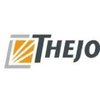
Asked in Thejo Engineering

Q. What is the process of belt joint, width of belt, type of belt use ?
Belt joint process involves connecting two ends of a belt. Belt width and type depend on the application.
Belt joint process includes mechanical fasteners, vulcanization, and welding.
Belt width depends on the conveyor system's design and the material being transported.
Types of belts include flat belts, V-belts, timing belts, and ribbed belts.
Belt type depends on the application, load capacity, speed, and environment.
Common materials for belts include rubber, PVC, nylon, and po...read more

Asked in Hospet Steels

Q. What is Total Productive Maintenance (TPM), and what are its components?
Total Productive Maintenance (TPM) is a maintenance strategy that aims to maximize equipment effectiveness and minimize downtime.
TPM involves the entire workforce in the maintenance process
It focuses on proactive maintenance to prevent breakdowns
TPM has eight pillars including autonomous maintenance, planned maintenance, and quality maintenance
TPM aims to improve overall equipment effectiveness (OEE) by reducing downtime, improving quality, and increasing productivity

Asked in Reliance Industries

Q. What maintenance philosophies are you familiar with?
Maintenance philosophies include preventive, predictive, corrective, and reliability-centered maintenance.
Preventive maintenance involves regularly scheduled inspections and maintenance to prevent equipment failure.
Predictive maintenance uses data analysis and monitoring to predict when maintenance is needed.
Corrective maintenance is performed after a failure has occurred to restore equipment to working condition.
Reliability-centered maintenance focuses on identifying critica...read more
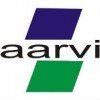
Asked in Aarvi Encon

Q. How would you measure the clearance of TDC and BDC for a vertical reciprocating compressor?
The clearance of TDC and BDC for a vertical reciprocating compressor can be measured using a dial indicator.
Use a dial indicator to measure the distance between the top dead center (TDC) and bottom dead center (BDC) positions of the piston.
Rotate the crankshaft to bring the piston to TDC and set the dial indicator to zero.
Rotate the crankshaft to bring the piston to BDC and note the reading on the dial indicator.
The difference between the readings at TDC and BDC will give you...read more
Asked in Wavemaker Global

Q. What is the density of water?
The density of water is approximately 1 gram per cubic centimeter.
The density of water is a fundamental property of the substance.
It is commonly used as a reference point for comparing the densities of other substances.
The density of water varies slightly with temperature and pressure.
At 4 degrees Celsius, the density of water is exactly 1 gram per cubic centimeter.
Water is less dense in its solid form (ice) than in its liquid form.

Asked in Tata Motors

Q. What is the blade efficiency of an impulse turbine?
Blade efficiency of impulse turbine is typically around 80-90%.
Blade efficiency is a measure of how effectively the blades of a turbine convert the kinetic energy of the fluid into mechanical energy.
It is calculated as the ratio of the actual work done by the blades to the work that would be done if the fluid were to expand isentropically.
Blade efficiency for impulse turbines is generally higher than reaction turbines, typically ranging from 80-90%.
Factors affecting blade eff...read more

Asked in Tata Motors

Q. What is the efficiency of an impulse turbine?
The efficiency of an impulse turbine is typically around 70-90%.
Efficiency is calculated as the ratio of actual work output to the theoretical work input.
Impulse turbines have high efficiency due to the fact that the energy transfer occurs in stages.
Efficiency can be affected by factors such as blade design, operating conditions, and maintenance.
Examples of impulse turbines include Pelton wheel and Turgo turbine.

Asked in Senvion

Q. How do you handle resources and manpower?
Resources and manpower can be handled efficiently by proper planning and allocation.
Identify the required resources and manpower for the project
Allocate resources and manpower based on their skills and availability
Regularly monitor the progress and adjust the allocation if necessary
Maintain open communication with the team to ensure smooth workflow
Implement contingency plans in case of unexpected events
Asked in Saudi Diyar Consultants

Q. How does a change in class in duct pressurization affect ducting installation and fabrication?
Change in class in duct pressurization affects ducting installation and fabrication.
A change in class may require different materials for ducting installation and fabrication.
Higher class ducts may require thicker materials to withstand higher pressures.
Lower class ducts may require less expensive materials to meet pressure requirements.
Changes in class may also affect the size and layout of ducting.
Proper calculations and design are necessary to ensure safe and efficient duc...read more
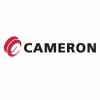
Asked in Cameron

Q. What is the factor of safety, and why do we use it?
Factor of safety is a measure of how much stronger a structure is than it needs to be for its intended purpose.
Factor of safety is the ratio of the maximum load a structure can handle to the actual load it is expected to handle.
It is used to ensure that a structure or component can withstand unexpected loads or stresses.
For example, a bridge may have a factor of safety of 2, meaning it can handle twice the maximum expected load without failing.
Factors of safety vary depending...read more

Asked in UltraTech Cement

Q. Sufficient Man power of 1000mtrs Belt conveyor structure Trassel assembly work & Gallery Assembly work time of erection time.
The time required for the erection of a 1000mtrs belt conveyor structure trassel assembly work and gallery assembly work depends on the manpower available.
The time of erection will vary based on the experience and efficiency of the workers involved.
Factors such as complexity of the structure, availability of equipment, and coordination among the team members will also impact the assembly time.
For example, if there are skilled workers with prior experience in similar projects,...read more
Asked in K R Auto Components

Q. What is the kaizen, What is 5s, what is the QA & qc
Kaizen is continuous improvement, 5S is a workplace organization method, QA is quality assurance and QC is quality control.
Kaizen is a Japanese term for continuous improvement in all aspects of life, including work.
5S is a workplace organization method that stands for Sort, Set in Order, Shine, Standardize, and Sustain.
QA is the process of ensuring that a product or service meets the required quality standards.
QC is the process of checking that a product or service meets the ...read more

Asked in Thermax Limited

Q. Cooling tower performance
Cooling tower performance is measured by its ability to remove heat from a process stream.
Cooling tower performance is affected by factors such as air flow rate, water flow rate, and temperature difference between the process stream and cooling water.
The efficiency of a cooling tower can be improved by increasing the surface area of the heat transfer media, using a more efficient fan, or optimizing the water distribution system.
Performance can be measured by the approach temp...read more
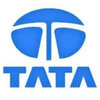
Asked in Tata Sponge Iron

Q. How do you maintain a roller screen?
Roller screen maintenance involves regular cleaning, lubrication, and inspection.
Clean the rollers and screen regularly to prevent buildup of debris and dirt.
Lubricate the rollers and bearings to ensure smooth operation.
Inspect the rollers, bearings, and screen for wear and damage.
Replace any worn or damaged parts immediately to prevent further damage.
Follow manufacturer's guidelines for maintenance and schedule regular maintenance checks.
Train personnel on proper maintenance...read more
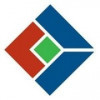
Asked in Imeg Engineering India

Q. What are heat load calculations and their components?
Heat load calculations involve determining the amount of heat that needs to be added or removed from a space to maintain a desired temperature.
Components include heat gain from occupants, equipment, lighting, and infiltration, as well as heat loss through walls, windows, and roofs.
Calculations are typically done using formulas based on the specific heat capacities and thermal properties of materials.
Example: In HVAC design, heat load calculations are used to size equipment li...read more

Asked in Mahindra & Mahindra

Q. Why is there no differential in a train?
A train doesn't need a differential because its wheels are fixed to the same axle and rotate at the same speed.
Train wheels are fixed to the same axle
Wheels rotate at the same speed
Differential is used in vehicles with wheels that rotate at different speeds
Differential allows for smooth turning

Q. What is the name of the refrigerant used in car air conditioning systems?
The refrigerant used in car air conditioning systems is called R-134a.
R-134a is a type of hydrofluorocarbon (HFC) refrigerant commonly used in car air conditioning systems.
It replaced the previously used R-12 refrigerant due to its ozone-depleting properties.
R-134a is non-ozone depleting and considered more environmentally friendly.
It has a lower global warming potential compared to other refrigerants.
R-134a is also used in other cooling systems such as refrigerators and free...read more
Interview Questions of Similar Designations
Interview Experiences of Popular Companies








Reviews
Interviews
Salaries
Users
















